
Maastricht-Sint Pieter (L): Allerheiligste Verlosser en St. Petrus (J.H.J. Kayser, 1874-1875) part 1/2
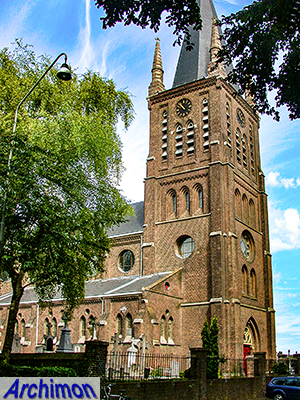
Until 1920, when it was annexed by Maastricht and became a neighbourhood of the city, St. Pieter was a village and a municipality in its own right. The village is known to have had a church as early as the 12th century. This church, named St. Petrus, stood more to the north and was several times demolished and rebuilt for being in the firing range of Maastricht. In 1755 a new church was built on the slope of the hill St. Pietersberg. This was a small one-aisled building, more a chapel actually, and built of marl, the type of limestone the hill was made of. Later this small church was extended with a side-aisle, but in 1872 the decision was made to replace it with a new church. This new church was built next to the old one and was completed in 1875. The old church was demolished in 1897.
The St. Pieter op de Berg (St. Peter on the mountain), as the new church was soon called, was the first church designed and built by J. Kayser. This architect had just left the employment of P.J.H. Cuypers' office. The St. Pieter was designed in a neo-Gothic style based on early French Gothic, much like many of Cuypers' churches. It's a three-aisled basilica with a robust tower on the east side; obviously the wish to have the tower facing the village prevailed over the "holy" rule to have the choir pointing towards the east. Ironically, while the church was literally built on top of marl, this traditional material was not used, and instead the church was built of locally made bricks.
In 1939 a new church was built in St. Pieter, not far from where the medieval church of St. Petrus had been. The church on the hill was closed and served several profane uses until it was reopened in 1954, this time called Allerheiligste Verlosser en St. Petrus to prevent confusion with the "new" St. Pieter.

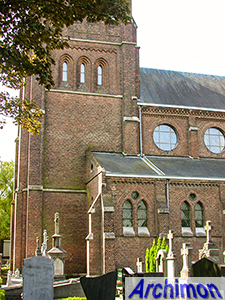
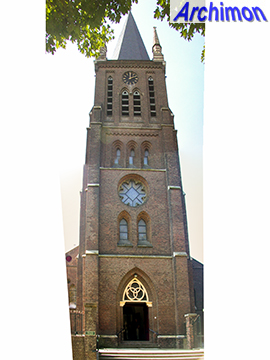
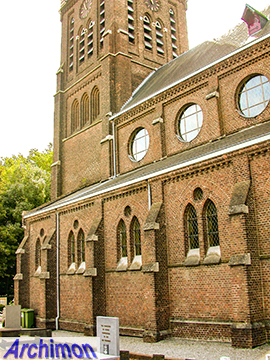
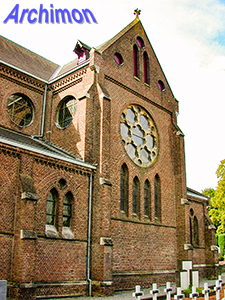
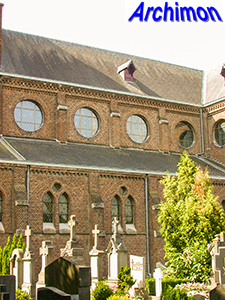

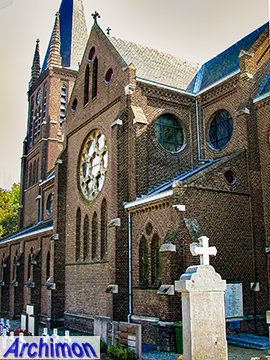
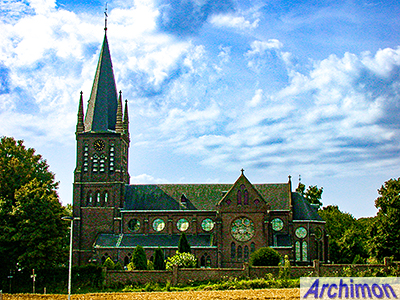

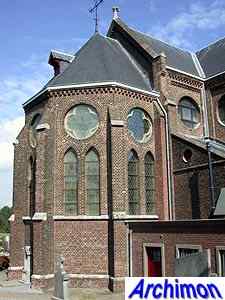
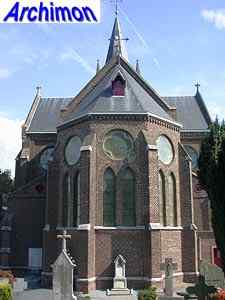
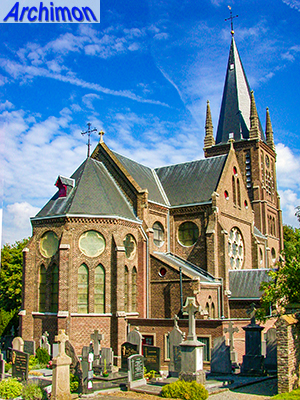


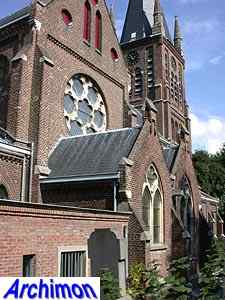
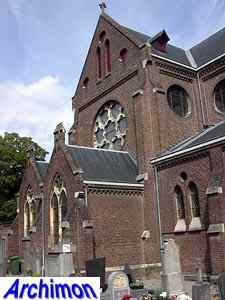
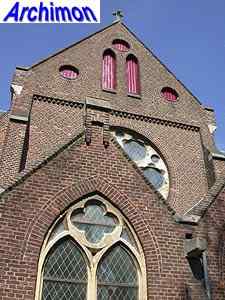

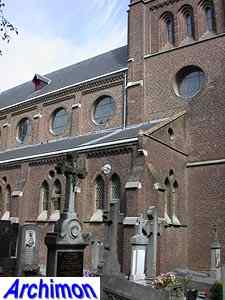
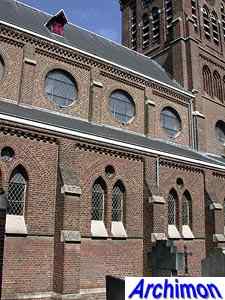

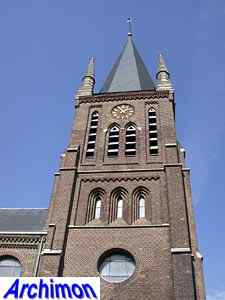
Back
to Churches in the province of Limburg
Back to
Maastricht
Back
to J.H.J. Kayser